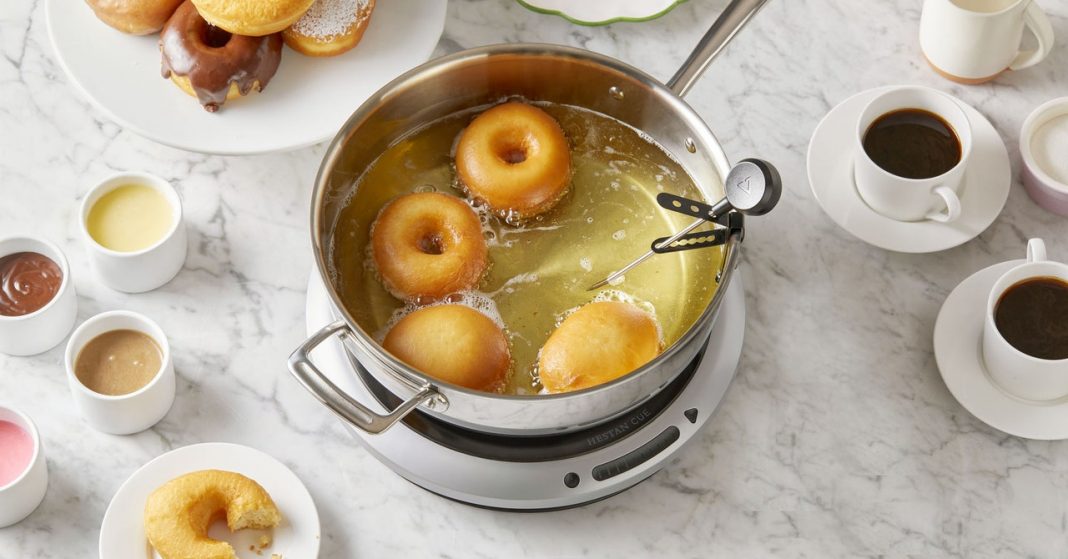In my kitchen, with those two pots of hot oil ready to roll and a sheet pan full of chicken, things did not go as planned. Like a movie chase scene where the hero yells “Punch it!” just before the engine dies, the Hestan lost heat and connectivity right before it was time to drop in the chicken. I ended up frying everything in the Dutch oven.
This wasn’t good, yet I knew from previous testings of the Hestan that it wasn’t normal. I spoke with company reps and learned that I’d exceeded both the amount of oil it can heat and the maximum target temperature on my first try. Soon after, Hestan made adjustments to its app to keep others from having the same problem.
Over the past few years, I had explored the Cue’s capabilities: using the temperature-controlled pan to cook a steak just the way I wanted it, being prompted to flip it at just the right time, or making clarified butter by setting the pan to 240 degrees Fahrenheit and letting the magic happen, unsupervised, while doing other work in the kitchen. In the chef’s pot, I made Hestan’s fantastic version of clams and chorizo. I found that using the Cue system quickly takes you in new directions and gets you cooking food previously beyond your confidence level.
That was also the case when I tried some of the probe recipes. I made Hestan’s potato salad recipe—standard and simple—which turned out well. It was also a peek behind the curtain; if you start with a known quantity of preheated water and add a specific amount of red potatoes cut to a certain size, the machine can make adjustments to keep the water at a steady temperature and the results predictable. (This is how good recipes work; the Cue just adds automation.)
That recipe had some leeway built in, and I took advantage of it to riff and use some Kewpie mayo and garlic chives. It also gave me an opportunity to do something basic, like try Hestan’s hard-boiled egg recipe so I could use the eggs as a garnish on the spuds. It sounds simple, but offering recipes for kitchen basics like fried eggs, plain-old pork chops, or a couple of sausage links cements the long-term utility of a product like the Cue.
From there, I had a little fritter fiesta, using the app to make red-onion pakora, classic Indian street food with turmeric, curry, and ajwain seeds, ready for dipping in a green chutney with garlic and ginger. I followed it up with Swiss chard fritters. For both recipes, the probe, base, and app communicate to keep the temperature of the oil where it should be, and you’re instructed to keep the batches small so the temperature doesn’t drop further than the burner can handle.
It recalled when I first reviewed the Cue, making salted almond brittle, something I’d never attempt without a worry of scorching the sugar. I marveled at the way that, by plugging in how thick a steak was, it could guide me to a perfect medium-rare doneness with a crisp, brown sear on both sides. Later, when I took Hestan’s stovetop on a two-day spin, the temperature control and detailed videos helped me make a perfect, torpedo-shaped omelet, followed by pan-seared salmon where I got the skin crispy without overcooking the center.
Table Stakes
Photograph: John Bedell/Hestan
If someone was considering the Cue and asked me whether they should buy it, the short answer would be yes. The long answer would be a three-parter, all relating to the passage of time.
